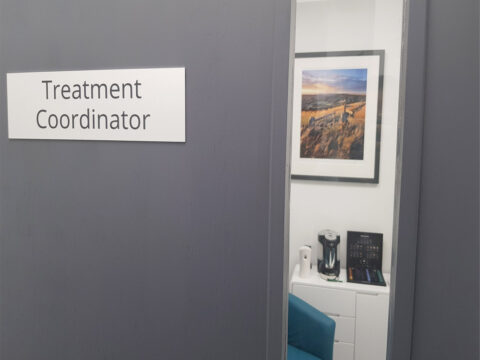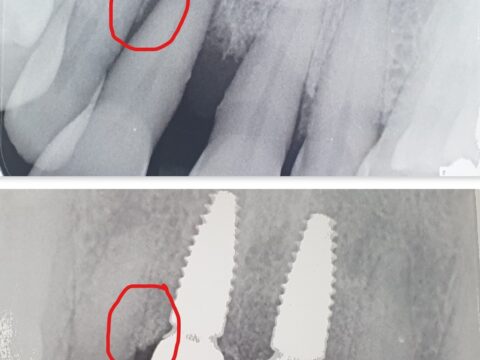This patient attended our clinic with a long standing failing bridge. This bridge was replacing her front 4 incisor teeth and had been providing her with a smile for over 10 years. However, the bridge was now failing and the patient knew she had to pursue treatment with dental implants or a removable denture. The thought of having to wear a removable denture made the patient anxious. Most people do not want to have removable acrylic teeth as this hampers one’s ability to eat, speak and smile with confidence.
Another problem for this patient was the advanced nature of her bone loss. Most patients will lose bone in areas of the mouth that have been edentulous (not had any teeth). The longer they have been edentulous for, the more bone will have receeded. In this case the patient had the most severe form of bone loss, she presented with no more than 1mm of thickness of bone remaining. That is as thin as a ridge can get.
The only way this patient could ever have dental implants was to have her bone structure restored so that she could have the implants placed into the correct place. This kind of procedure can take upto 9-12 months for completion as it is the most advanced form of dental implant treatment required by any patient. The patient was anxious to have to wear a removable denture for a single day, let alone for a full 12 months. So what was our solution?
The solution to no bone, failing bridge and fear of wearing a denture
We planned to keep the failing bridge in the mouth for the whole duration of the treatment until the new teeth were able to go on. This was possible by adjustments we made to the bridge to help make it last for this period of time. We also meticulously planned all of the surgical phases to be able to work around the bridge. This meant the patient would never be without permanent fixed teeth at any point during her advanced treatment plan.
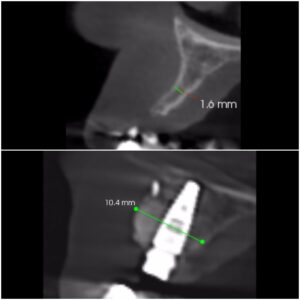
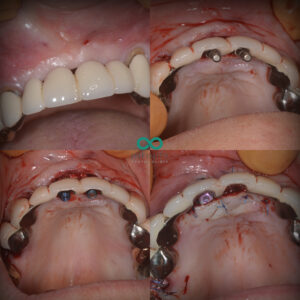
The implants are then left in the newly formed bone for a further 3 months to integrate with the bone (osseointegration). During all of this time, we have manipulated the bridge but not completely removed it. Therefore, this patient has been wearing her permanent bridge during the whole treatment plan. Her quality of life had been unaffected during this whole period. She was able to continue to eat, speak and smile as normal at every stage.
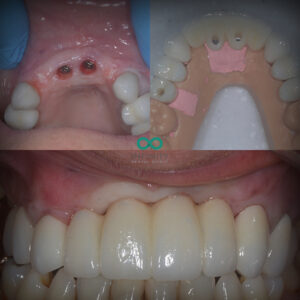
It was only possible to provide this patient with fixed permanent teeth by initally providing her with sufficient bone. Although dental impalnts are made from a very solid material (titanium), the long term strength of implant supported teeth is determined by the bone into which they are placed. By carefully planning this treatment we were able to build a foundation for long term future success for this patient and her smile. Best of all – this was all done with minimal stress to the patient along the way!
Thank you for reading,
Mohsin Patel BDS MJDF RCS (Eng)
Related articles...








